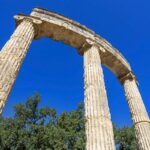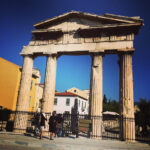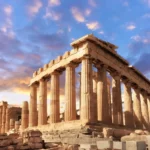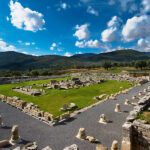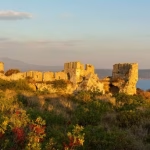Itinerary
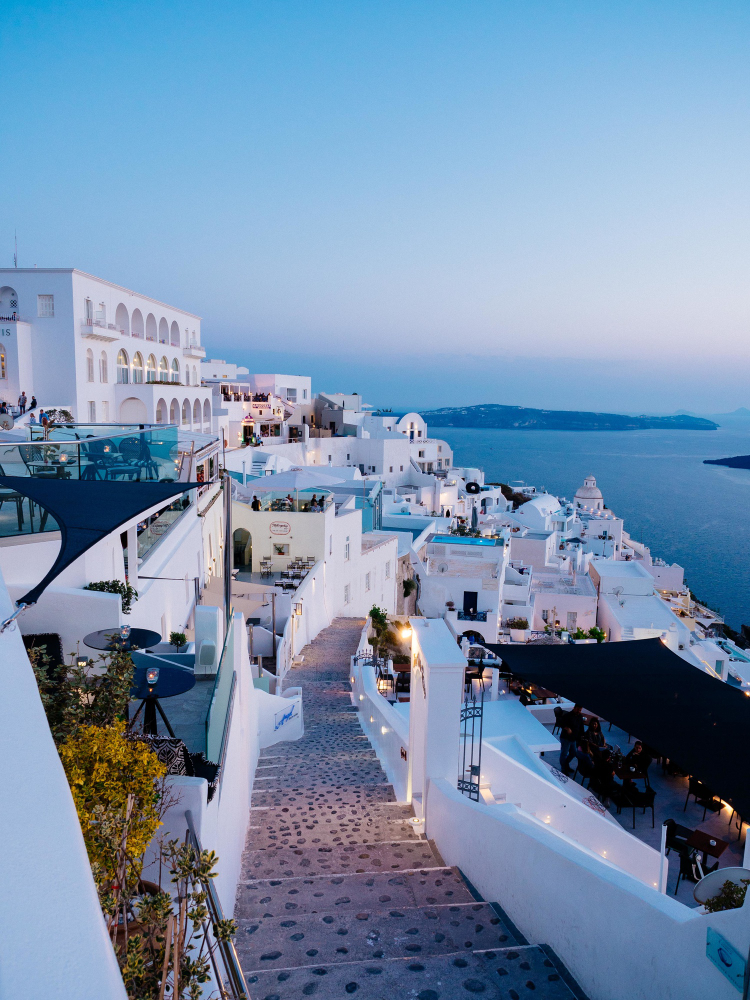
Hello
Athens!
Our adventure begins in Athens, an enthralling capital city soaked in myth and legend. Depending on when you land, you may have time to explore a little or perhaps dive into a taverna to sink your teeth into the much-loved local cuisine. Either way, we’ll gather at the hotel for a welcoming briefing in the evening when we’ll meet as a group for the first time.
Accommodation: Arion Hotel (or similar)
Acropolis Ruins
& Museum
This morning we embark on a walking tour of Athens, taking in the Acropolis ruins and artefact-filled Acropolis Museum. This walk is actually a journey through the history of the city; from the classical world ruled by the Olympian deities to the 21st century.The afternoon is free for you to explore Athens on your own. Your leader can suggest where to visit.Please note: During busy periods, the walking tour might take place in the afternoon when it is quieter and the morning will be free.
Accommodation: Arion Hotel (or similar)
Meals included: Breakfast
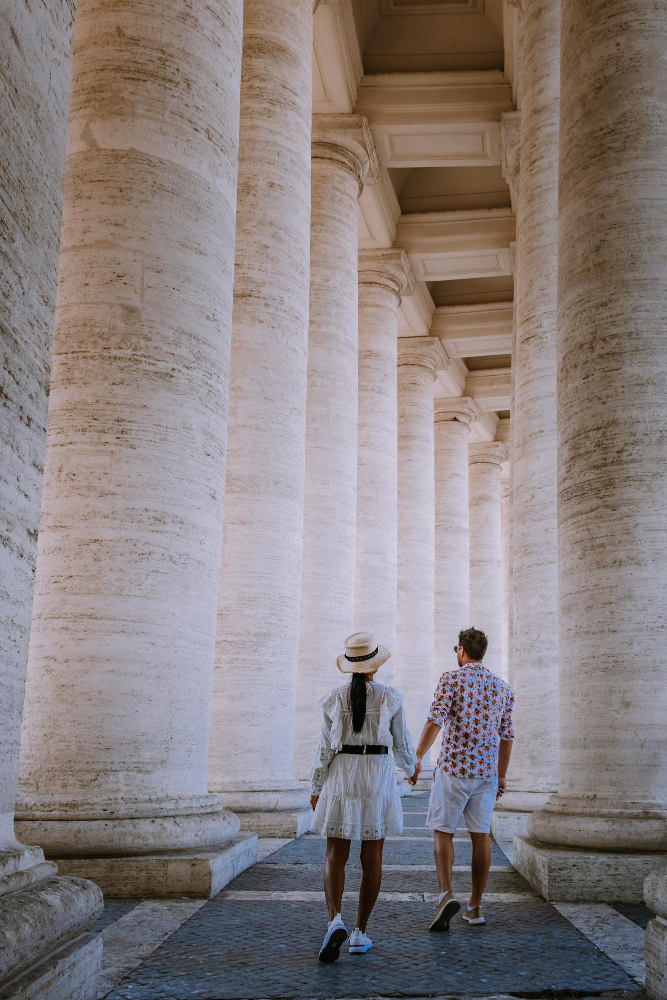
Ancient Corinth
& Mycenae
After breakfast, we head to Nafplio. On the way, we stop at the Corinth Canal, which separates the Peloponnese from mainland Greece and connects the Gulf of Corinth with the Aegean Sea. We then visit the archaeological site of Corinth, one of the major cities in antiquity and an important centre of trade. Extended excavations here have revealed a Roman forum, temples, fountains and various other monuments.We then continue to the archaeological site of Mycenae, the kingdom of legendary Agamemnon and the most important and richest palatial centre of the Late Bronze Age in Greece. Mycenae comprises a fortified acropolis and surrounding funerary and habitation sites. We then head to the picturesque town of Nafplio, where we spend the night.
Accommodation: Rex Hotel (or similar)
Meals included: Breakfast
Explore
Epidaurus
Today we visit the impressive Venetian fortress of Palamidi, overlooking the town. It was initially fortified by the Venetians during the second Venetian occupation of the area (1686-1715). In 1715, it was captured by the Turks and remained under their control until 1822, when it was liberated by the Greeks. The most important monuments we’ll visit are the castle, and the prison of Kolokotronis, a hero of the Greek Revolution.Next, we will explore Epidaurus (approximately a 45-minute drive from Nafplio), where the Sanctuary of Asclepius, the most famous healing centre of the classical world, is found. We’ll also visit the Ancient Theatre of Epidaurus, one of the finest examples of its kind. In the afternoon, we head to Sparta, a powerful city-state in ancient times, where we spend the night.
Accommodation: Lakonia or Maniatis Hotel (or similar)
Meals included: Breakfast
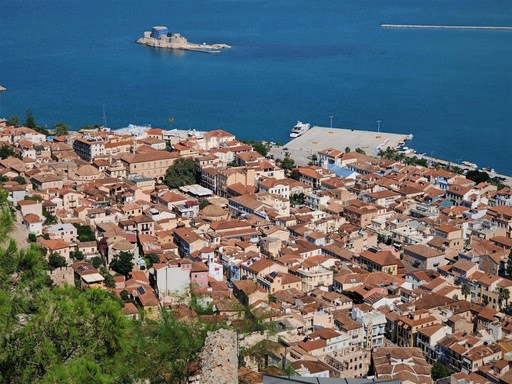
Fortress of Palamidi
explore Mystras
Enjoy one more exploration of Nafplio with a morning visit to the hilltop Fortress of Palamidi, which stands guard over the town. It was initially fortified by the Venetians during the second Venetian occupation of the area (1686-1715). In 1715, it was captured by the Turks and remained under their control until 1822, when it was liberated by the Greeks. The most important monuments of the site are the castle, the Church of St Andrew, and the prison of Kolokotronis, a hero of the Greek Revolution.
Depart for Pylos, visiting Ancient Messene and the Castle of Pylos

Explore Ancient Olympia, the site of the first Olympic Games
Drive to the Mycenaean Palace of Nestor after breakfast, which lies 11mi (17km) north of Pylos. It’s described in Homer’s Odyssey as the court of the hero Nestor, who took part in the voyage of the Argonauts and sent 90 ships to fight in the Trojan War. From the raised walkways and explanatory text, you get a good idea of the layout of a Mycenaean palace complex.
Our next destination is Olympia (approximately a two-hour drive), where we visit Ancient Olympia, the site that hosted the first Olympic Games. Dedicated to Zeus, the father of the gods, at the confluence of two rivers, it was the most important religious and athletic site in Ancient Greece. Our exploration includes the Sanctuary of Zeus and the many buildings around it, such as an athletic premises used for the preparation and celebration of the Olympic Games, administrative buildings, and other lay buildings and monuments.
Site of Delphi

Visit Temple of Poseidon in Cape Sounio
After breakfast, we head to Nafplio. On the way, we stop at the Corinth Canal, which separates the Peloponnese from mainland Greece and connects the Gulf of Corinth with the Aegean Sea. We then visit the archaeological site of Corinth, one of the major cities in antiquity and an important centre of trade. Extended excavations here have revealed a Roman forum, temples, fountains and various other monuments.We then continue to the archaeological site of Mycenae, the kingdom of legendary Agamemnon and the most important and richest palatial centre of the Late Bronze Age in Greece. Mycenae comprises a fortified acropolis and surrounding funerary and habitation sites. We then head to the picturesque town of Nafplio, where we spend the night.
Accommodation: Rex Hotel (or similar)
Meals included: Breakfast

